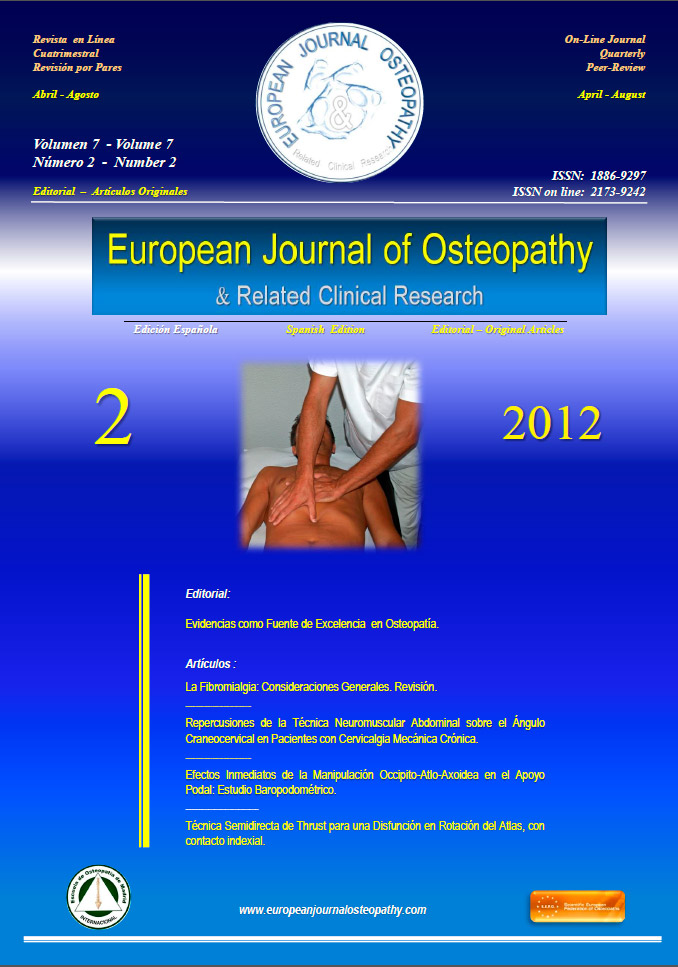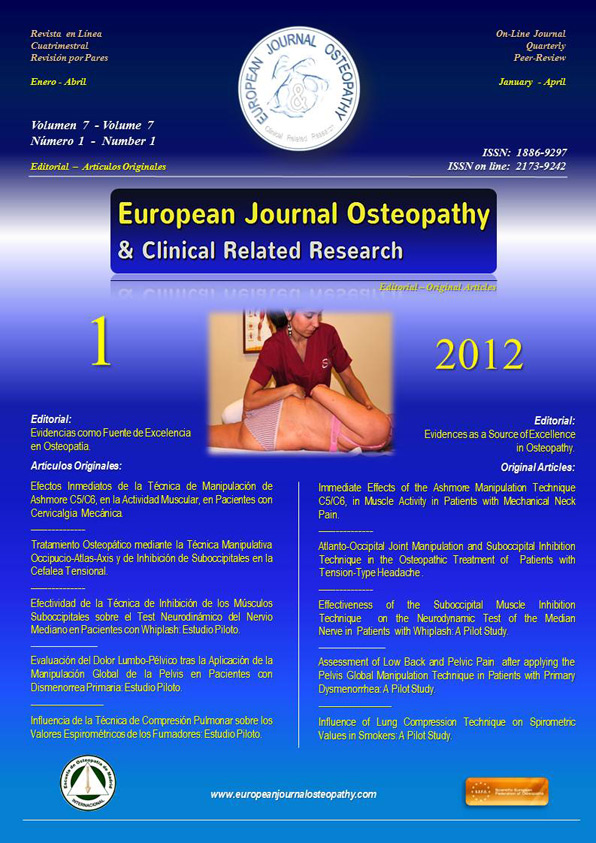"Il est des parfums frais comme des chairs d'enfants
Doux comme les hautbois, verts comme les prairies,
Et d'autres, corrumpus, riches et triomphants."
(There are perfumes as fresh as a child's skin,
Sweet like an oboe, green like a prairie,
And others, exultant, yet rich with sin.)
Doux comme les hautbois, verts comme les prairies,
Et d'autres, corrumpus, riches et triomphants."
(There are perfumes as fresh as a child's skin,
Sweet like an oboe, green like a prairie,
And others, exultant, yet rich with sin.)
<from Baudelaire's Correspondances1>
by
Ray Bishop, Ph.D.
While demonstrating a Rolfing� release technique at a local massage therapy school, a strong distinctive odor was released by a student as her tissue relaxed under my hands. Commenting on this olfactory eructation, I was asked to describe it. My initial reaction was: "It smells yellow!" Naturally, this elicited a puzzled expression and a confusing silence. I went on to explain that the body holds a variety of toxins and that associated smells can be identified and categorized as your client releases these toxins. Furthermore, they often, at least for me, initially manifest themselves as color. Once the color has been identified, a deductive process begins as I identify the odor. My experience of "colored smelling" exemplifies a neurological phenomenon which has received considerable attention recently, called synesthesia.
I was first introduced to this bizarre concept a few years ago by a good friend who recommended an extraordinary book: The Man Who Tasted Shapes by Dr. Richard Cytowicz. This book is a curious mé lange of hard science, personal speculation and brilliant deductive reasoning which elucidates the mysteries of an arcane subject in a highly entertaining manner. Before I consider his and other theories of possible causes of this confusion of the senses, some historical background might prove helpful.
Exactly what synesthesia is and how it occurs is a subject of some controversy. In fact, until recently many scientists questioned its existence, although it is now widely accepted as a valid neurological phenomenon. Synesthesia is the effect of one sense triggering a response in another. In the arts, many major figures were interested in creating a fusion or unity of diverse art forms, creating compelling works whose history often overlaps with the synesthetic experience. Unquestionably, the most influential effort in this arena is the music drama of the 19th century German composer, Richard Wagner. Wagner's Gasamtkunstwerk (literally, Total Art Work) was an elaborate effort to coordinate music, text, set design, lighting and action into an overpowering unity. Wagner's intention was to enrapture and mesmerize his audience, transporting them to a mystical mythological realm. He even designed and built a concert hall in Bayreuth where his unique dramas could be performed in accordance with his often contradictory theories.
His writings influenced an entire generation of musicians and artists, particularly in France where his ideas were transformed in very curious ways. One of the first important French Wagnerians was the symbolist poet, Baudelaire. This artist, quoted at the beginning of this paper, explored a richly erotic world of symbolic connections between the senses. Notice how Baudelaire creates an oddly perverse multi-sensate image with his images linking smell, color and sound. French writers of the period like Huysmann created elaborate sensual worlds described in rich synaesthetic detail (see, for example the "taste organ" described in his A Rebours). Another French symbolist, Arthur Rimbaud, experimented with such conceits as linking color with specific vowels. His 1871 poem Les Voyelles, for example, begins with the lines:
"A black, E white, I red, U green, O blue: vowels,
Some day I'll speak your hidden messages."2
The early 20th century composer and mystic Alexander Skryabin experienced certain keys as having distinct colors. His 1910 symphony, Prometheus, The Poem of Fire, included a mute color-generating keyboard which projected colored shapes and images during the performance. Visual images projected during the performance were intended to mirror tonal and melodic events. A later incomplete work, Mysterium was planned which would fuse dance, music, poetry, colored light and fragrance. Similar connections between color and sound occur in the works of the 20th century French mystic Olivier Messiaen. Messiaen's large-scale symphonic work Les Couleurs de la Cité Cé lè ste (The Colors of the Celestial City, 1963) uses programmatic linking of specific harmonies and instrumental colors with esoteric religious imagery. Both of these artists described true synesthetic hearing, seeing tonalities and even chords in terms of highly distinct colors.
Somewhat more artificial unions of the visual and auditory arts are found in an art exhibit entitled Synesthesia in Contemporary Art. The collection includes works by well known multimedia artists such as Laurie Anderson and Nam June Paik. In his introduction, Don Bacigalupi establishes a connection between aural and visual phenomena, arguing that these links predate language. Popular culture, he argues, extends this relationship by "exploiting a symbiotic relationship between sound and vision. We use sound in the service of the visual and conversely, we exploit visual art in service of sound." He believes that such interrelationships are "the commercial manifestations of the Gesamtkunstwerk imagined by Richard Wagner."3 While this seems a bit of a reach, certain thematic relationships with Wagner's theories clearly exist. Describing his art, Alberto Mijangos employs analogous language. "In music, numerical notes follow one another forming a pattern that creates a song. Patterns of color and form develop to make a painting. In 'Surrounded by Sound', I attempt to achieve a continuum of Action and Awareness- an invisible sensory link that connects music and visual art."4
Theories about what causes some individuals to experience the world synesthetically are diverse. One of the most interesting, mentioned above, appears in The Man Who Tasted Shapes. The book's title comes from an experience Cytowicz had while eating dinner with a friend. This friend rather sheepishly mentioned that he feared for his sanity since he experienced tastes as having highly distinctive shapes. As a neurologist, Cytowicz reassured his friend that he was not insane but was experiencing a type of synesthesia, carefully explaining the details of this condition in simple terms. This conversation led Cytowicz to research this neurological phenomenon and eventually resulted in his developing an interesting theory of its cause. Along the way, he encountered other synesthetes including a woman who experienced sounds as having shape. At his first meeting with her, she begged him to shut off his beeper, complaining that the sound was like lightning bolts or "blinding red jaggers."5 After much experimentation, he theorized that the source of synesthesia is in a primitive part of the brain, the limbic brain, more particularly the left hippocampus. Arguing that synesthesia shares certain features with epilepsy, he proposed that parts of the brain somehow get disconnected, "causing the normal processes of the limbic system to be released, bared to consciousness, and experienced as synesthesia. In other words, a stimulus causes a rebalancing of regional metabolism."6
There are many other recent theories about the causes of this condition. A useful summary of them is found in an article by Harrison and Baron-Cohen.7 One theory they cite is that of learned association, an approach that argues that learning letters from colored alphabets results in associations that effect adult experience. Cytowicz and others dismiss this theory, pointing out that there exists little correspondence between color associations in true synesthetes. A complete lack of any external pattern in color associations argues in favor of an internal mechanism. A popular internal mechanism theory is the Preserved Neural Connectivity theory, which posits that certain neural pathways between the visual and auditory regions of the brain found in early infancy persist into adulthood. This theory helps explain why auditory stimuli would simultaneously stimulate the visual cortex. A similar theory, the sensory leakage theory, suggests that since many cases of spontaneous synesthesia arise after damage to the anterior portions of the brain that these injuries somehow cause leakages of information into neural pathways ordinarily employed for processing visual information. There is also a genetic theory, based on studies that suggest patterns of synaesthesia in families, particularly in twins, although the data are very inconclusive. Cohen and Harrison argue that the kind of artistic synesthesia described above is not true synesthesia but a contrived artistic device or mannerism they call pseudo-synesthesia. My reading, however, suggests that many artists (Messiaen, Scriabin and Rachmaninoff, to name a few), truly did experience the world synesthetically. By their own account, their art was a natural expression of highly individual synesthetic experiences of the world.
What remains more problematic is the question of whether this sense can be learned. Omar Karel optimistically suggests that there exists a possible linkage memory system which uses a synesthesia to increase recall. "The possibility that synesthesia is exercisable, that it (sic) is some sort of 'symbolically sensitive sensory muscle' is alluring. When a synesthete looks at a door, he is more likely to see a distinct shade and hue, rather than a 'white', or 'wood'. He may possibly listen, or hear, a distinct sound it produces. He may smell it and taste it. All these sensory impressions are memory cues that help the mind recollect any event. Memory, rather oddly, works in a remarkably useful way in this framework."8 I believe that this argument is only valid if one has an a priori experience of the world as synesthetic. Regrettably, I find no evidence that is the case. In fact, most neurologists I read argue exactly the opposite.
Based on the above disucssion, I believe that I experience my client's reality synesthetically. Here is how I perceive my process. First, I assume that my client's body is a storehouse of myofascial information and that this information can be accessed through touch. Once touched, an area of trauma can be accessed and the memory of specific events related to the resistant tissue can be experienced and released.9 I also believe that once this trapped debris is released, a distinct odor is frequently emitted. I can perceive and process that information in a manner which I believe to be a type of synesthesia (smell as color). Once this linkage has occurred, it triggers a rational process in which I more precisely ascertain the nature of the smell. I then ask the client what possible relevance this experience might have. This leads to a discussion about the specific event and often provides useful insights and helps the client resolve or better understand his experience.
For example, when touching the leg of a young female client, I smelled a dry dusty smell which I experienced as bright white. I soon realized that the bright white smell was chalk which I could see in billowing in clouds. I asked the client why I might smell chalk. She replied that she had run track and that the chalk was used to mark the track. Prior to palpation, I had no information regarding the client's athletic experiences. Owing to the sheer number of similar experiences, I accept that this us simply is how I process information and I know that others do the same. While I seriously doubt that this is a learned skill, those who process information in this or a similar manner can and do certainly refine their sensing through practice as I have. I hope that this article may stimulate interest in this poorly understood phenomenon and that others might expand my understanding of this intriguing process which I understand as a type of proprioceptive/olfactory synesthesia.
1. Translation by the author. The complete poem may be found in: Robinson, Christopher. French Literature in the Nineteenth Century (New York: Barnes & Noble, 1978), pp. 129-30.
2. Arthur Rimbaud, "Voyelles", "A noir, E blanc, I rouge, U vert, O bleu: voyelles, Je dirai quelque jour vos naissances latentes:" (translation by the author).
3. Bacigalupi, Don, Ph.D. Synesthesia: Sound and Vision in Contemporary Art. August 27-December 4, 1994. San Antonio Museum of Art (San Antonio, TX: San Antonio Museum of Art, 1994), p. 1.
4. Ibid, p. 24.
5. Cytowic, Richard E, M.D., The Man Who Tasted Shapes (Cambridge, MA: MIT Press, 1993), pp. 46-47.
7. Harrison, John E. & Baron-Cohen, Simon, ed., Synaesthesia: A Review of Psychological Theories, in Synaesthesia: Classic and Contemporary Readings, Chapter 7 (Cambridge, MA: Blackwell, 1997), pp. 109-22. See also The Physiological Basis of Synaesthesia, same collection, pp. 123-47.
8. Excerpt from a website by Omar Karel on synesthesia.
9. Oschmann, James and Nora, "Somatic Recall." Part I. Soft Tissue Memory, Readings on the Scientific Basis of Bodywork, Vol. II, (Dover, NH: Nature's Own Research Association, 1995), p. 15.
IdaRolfsBrahms.com
Go to Content
IdaRolfsBrahms.com
Go to Content








 1:17
1:17
 Daniel Enriquez de Guevara
Daniel Enriquez de Guevara




























.jpg)






















0 comentarios :
Publicar un comentario